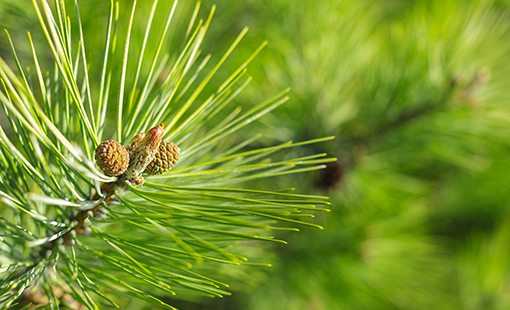
All About Evergreens
What is an Evergreen?
Evergreen is a term used for any plant that retains its foliage through the year. As a group, evergreens are divided into two classes: needle-leaf (conifer) and broadleaf. Needle-leaf evergreens include spruce, pine, juniper, fir and yew. Broadleaf evergreens include plants such as azalea, rhododendron, southern magnolia, live oak and holly.
Evergreen Trees vs. Shrubs
Most evergreen trees will grow too large for an average size lot. A cute, little sapling purchased at your local nursery could eventually grow into a 60-foot-tall behemoth. That’s why it’s important to select evergreens that stay in scale even when mature. Many common evergreen trees have shrubby members of their family that will fit more easily into your landscape.
Evergreen Tree Care
As a general rule, most evergreens prefer a well-drained, slightly acid soil. Because they never go completely dormant, even in winter, evergreens require slightly moist soil to keep them from drying out. Encourage consistent soil moisture by adding several inches of mulch around your plants. Light requirements vary by species. For example, pine, spruce, juniper and fir need full sun, while yews and broadleaf species are more tolerant of partially shady locations. Read the plant label before you purchase an evergreen so you know where it will grow best. Here’s a rundown of some of the best dwarf conifers for your landscape.
Popular Evergreens
Yews: As versatile as they are handsome, yews come in a wide variety of sizes and shapes. Use tall narrow varieties, such as Hicks, to camouflage an ugly shed or garage. Left unpruned, Hicks yew will grow 6-10 feet tall. Or, use a low-growing variety, such as Everlow, as a groundcover in shady or partially shady spots. This hardy variety grows just 12-18 inches tall. When mature, most yew varieties produce bright red, fleshy berries that add to the color show. Yews thrive in sun or shade and have few insect or disease problems. They are all poisonous if ingested, so prevent young children from tasting the berries.
Pine: Not every pine turns into a giant tree. There are some dwarf species that grow just a few feet tall, making them ideal for foundation plantings, rock gardens, or even containers. Dwarf mugo pine, for example, is a slow-growing variety that forms a dense mound of rich green needles. Over time, dwarf mugo pine will grow 3-5 feet tall and 6-10 feet wide.
Juniper: Talk about variety! There are dozens different varieties of juniper to choose from that vary in color, height, and shape. Junipers are more tolerant of poor soil and drought than other evergreens and make excellent groundcovers on exposed slopes or along a driveway or sidewalk. One of our favorites is dwarf Japanese juniper that has bright bluish-green needles with a purple tint during the winter. It grows 12 inches tall but can spread 6 feet wide. For a colorful accent, try Gold Coast juniper. It has gold-tip foliage and grows 3 feet tall and 4 feet wide.
Spruce: Not every spruce tree grows 50 feet tall. Dwarf Alberta spruce, for example, is a slow-growing compact spruce tree that will only reach 12 feet tall. The plants have short, blue-green needles that contrast beautifully with other shrubs or perennials. It makes a great container plant, too. Bird’s nest spruce is another option that has a tight, rounded shape and bright green needles. It grows slowly and will become 3-5 feet tall and 4-6 feet wide.
Cypress: The layered branching habit and fanlike foliage of dwarf cypress makes it a top pick for any situation. It’s a great choice to flank an entry or mixed in a perennial border. For additional color, look for cypress varieties such as golden dwarf Hinoki. This charmer grows 18-36 inches tall and sports spectacular golden yellow foliage. It thrives in partial to full sun.
Information courtesy of BHG.com

 Adams Fairacre Farms
Adams Fairacre Farms